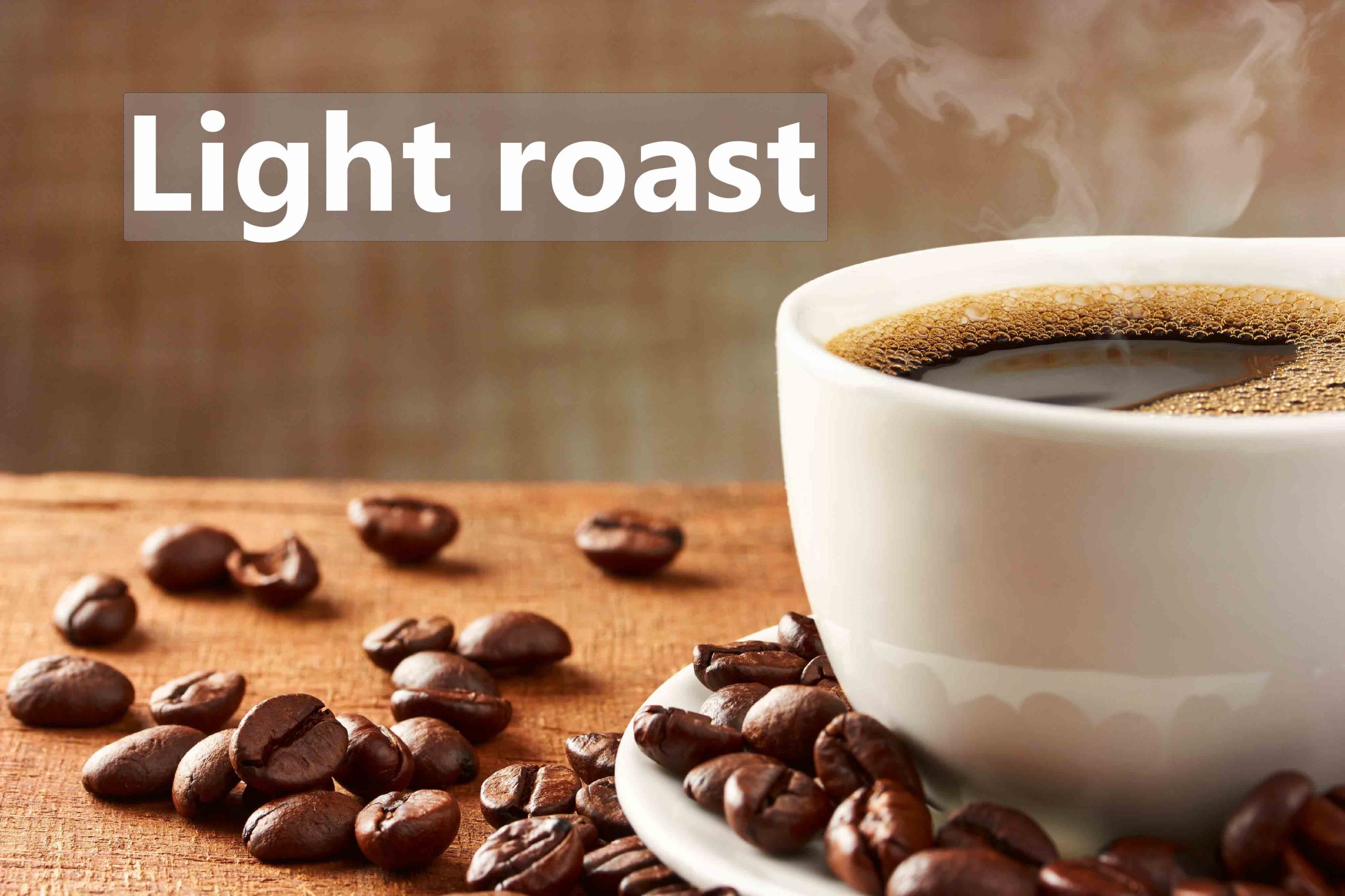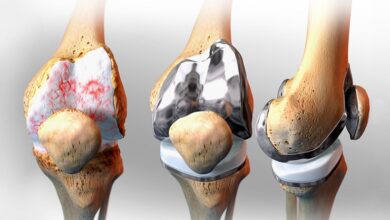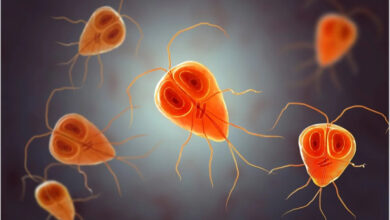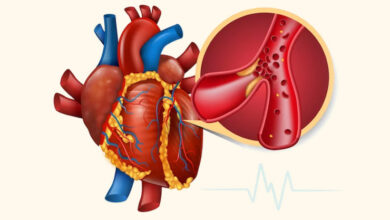What is the difference between dark roast and light roast coffee? Which is healthier?

Coffee has antioxidant and anti-inflammatory properties and is helpful for problems such as chronic inflammation, cardiovascular diseases, chronic liver diseases, diabetes, and cancer. However, you may ask whether dark or light roast coffee is healthier.
Different coffee roasts have different antioxidants, anti-inflammatory properties, and acidity levels. For example, dark roast coffee has fewer bites, and light roast coffee has more antioxidants. In the following, we will learn more about roasting or roasting coffee and the differences between different types of coffee in terms of the degree of roasting.
What does roasting or roasting coffee mean?
Roasting or roasting coffee is a thermal process that brings out the aroma and flavor of green coffee beans. Green coffee has a pleasing aroma and taste, but this drink is prepared without roasting the beans. Roasting coffee beans causes chemical changes because the beans quickly reach a very high temperature. High temperature changes the composition of coffee beans. This chemical change affects coffee’s aroma, taste, and antioxidant properties.
Types of roasting or roasting coffee
1. Light roast
Light roast coffee is golden brown and has a mild flavor with no oil on the surface of the beans. Light roast is popular in specialty coffee for creating more specific flavors. These coffees usually have crisp acidity, mild wind, and a fresh taste. The body is the feeling that coffee creates in the mouth or the texture and concentration of coffee.
This roasting method highlights the primary characteristics of the coffee more than any other. Light roast coffee often reaches an internal temperature of 350 to 400 degrees Fahrenheit (177 to 204 degrees Celsius). These seeds hardly get what we call the first crack. The first cracking is the stage where the vapors inside the sources are released by breaking the outer wall, creating a sound similar to “cracking.” Other names of light roast coffee are Cinnamon, Half City and Fair City.
2. Medium roast
Medium roast coffee is medium brown, and its surface is usually not oily. These coffees have moderate acidity and windiness. Roasting coffee this much preserves many of the original coffee flavors, but some of the freshest and most pristine light roast notes are lost. Specialty coffee roasters like medium roast because it is more popular with regular coffee drinkers than light roast. These coffees have less acidity and intensity, but they can still provide the natural taste of coffee.
Medium roast coffees reach temperatures of 400 to 430 degrees Fahrenheit (204 to 221 degrees Celsius) and are usually roasted a little longer than the first crack but not as much as the second crack. Other names of this coffee include:
- Regular roast (regular roast);
- American roast;
- City roast (city roast);
- Breakfast.
3. Medium dark roast
The colour of this coffee is dark brown and usually has an oily surface. These coffees have low acidity, intense aroma, and deeper and bitter flavors. Coffees that are roasted to this extent typically do not retain the original characteristics of the coffee beans, but this does not mean that these coffees are tasteless and undesirable. Some dark roast coffees have chocolate, nutty, and caramel flavors.
Dark roast coffee was the best coffee for a long time, the main reason for which was the low quality of coffee in the past. Roasters remove the less desirable flavors of low-quality coffees to achieve more profound, uniform, and desirable flavors. This method was suitable for low-quality coffees, but with the increase in the quality of coffees, this is no longer necessary. Today, specialized roasters aim not to eliminate sour flavours but to achieve more profound, bitter, and pleasant flavours.
These coffees reach 430 to 450 degrees Fahrenheit (221 to 232 degrees Celsius) and are usually roasted to the second crack and sometimes a little more. Other names of this roast are the Entire City and Vienna Roast.
4. Dark roast
French roast, Italian roast, continental roast, espresso roast, and New Orleans roast are all very dark and often black at night and have a greasy and oily surface. Coffees that have been roasted this far have not retained any of their original characteristics and usually taste like burnt coffee.
Specialty roasters would never roast their expensive, carefully selected coffees this far because it would waste excellent-tasting coffee. It’s best not to buy coffees this dark unless you want to taste like liquid charcoal.
The taste of coffee
The types of coffee roasting are also different in terms of taste and sweetness. Light and medium roast coffees are milder, while dark ones have a more pungent and bitter taste. Dark roast coffees have the most bitter taste.
Types of coffee and their characteristics
| type of coffee | acidity | Antioxidant activity | caffeine | Taste |
|---|---|---|---|---|
| Green | has (highest acidity) | has (most) | Less than roasted coffee | gentle |
| Light Roast | has it | has it | A little more than dark roast | gentle |
| medium roast | has it | has it | A little more than Literust | Stronger than Lite Rust |
| Medium dark roast | has it | has it | - | Strong, bitter and sweet |
| dark roast | has (lowest acidity) | has (least) | Less than light roast but more than green coffee | strong, bitter |
Why is the degree of coffee roasting not the same everywhere?
The naming of coffee roasting types is very little standardized. If you go to the store and pick up a light roast coffee off the shelf, it will probably have darker beans than most specialty coffee roasters sell. The reasons for this confusing situation are:
- The quality of coffee beans is increasing daily, so it has become easier to find coffee beans with exceptional flavors.
- Roasters don’t necessarily have to cover up sour flavors. Dark roasts are designed to mask low-quality flavors, but since the quality of coffee is increasing, this is no longer necessary.
- Lighter roasts have more complex flavors. Now that roasters can have lighter roasts without creating off-flavors, they are discovering new ways to bring out the wild, distinctive flavors in high-quality coffee beans.
This means that the scale may move from dark to medium and light to a lighter area, and at the same time, the coffee taste will be better. This condition, while confusing, is good because it means the coffee tastes better over time!
Which type of roasting is healthier?
The benefits of light roast coffee compared to dark roast depend on what you want to get out of your cup. The health factors of coffee that we should consider include antioxidants, anti-inflammatory properties, and acidity.
1. Antioxidants
Light roast coffee is superior in terms of the number of polyphenols. (Polyphenols are antioxidants that remain after the roasting process.) According to some research, the longer the coffee beans are roasted, the fewer polyphenols remain. Although light roast coffee has more polyphenols, dark roast coffee has more antioxidant activity because antioxidant activity increases with the degree of roasting. For example, heavily roasted coffee has more antioxidant activity than lightly roasted coffee. More antioxidant activity can compensate for the lack of polyphenols in dark roast coffee.
2. Anti-inflammatory properties
According to one research, light roast coffee has more anti-inflammatory effects than dark roast. Also, fair roast coffee has the highest antioxidant activity, which is contrary to other findings about dark roast coffee and antioxidant activity. Of course, you should note that the researchers performed this experiment on cell cultures, not humans.
According to Dr. Sampath Parthasarathy, a former University of Central Florida research associate, researchers must see these results in human trials. “We know that antioxidants protect us against many diseases,” explains Dr. Parthasarathy. We also know that inflammation is the basis of many chronic diseases such as diabetes, heart disease, cancer, and neurological diseases such as Alzheimer’s. However, these diseases are progressive and occur over a long period of time. “You can’t see long-term benefits in a laboratory study.”
3. acidity
Some coffee lovers drink decaffeinated coffee or avoid this drink altogether. Sometimes, caffeine causes stomach irritation or heartburn caused by the secretion of stomach acid. Researchers have also compared types of roasting based on acidity. According to some evidence, dark roast coffees cause less stomach acid secretion than medium roasts. Therefore, dark roast coffee is better for the stomach.
4. Caffeine content
Many people assume that dark roast coffee has more caffeine because of its stronger taste. But in reality, dark roast and light roast coffee have almost the same amount of caffeine. The composition of Arabic coffee was investigated in research, and the caffeine content of light, medium, and dark roasts was determined. In all three types of roasting, the caffeine content was around 1%, although the caffeine content was slightly higher in medium and light roasts.
This slight difference is also related to the measurements. Light roast beans are denser than dark roast beans, so each bean has a little more caffeine. Measuring with a spoon (based on volume) does not indicate the density or density of the grains, while measuring with a weight (based on mass) indicates the density of the grains. So 1 spoon of light roast beans can have 70 mg of caffeine, while the caffeine of 1 spoon of dark roast beans is 65 mg. Therefore, the caffeine content of 5 spoons of light roast coffee is slightly higher than that of 5 spoons of dark roast coffee.
Conclusion
Coffee has many health benefits and is useful for preventing chronic diseases. Of course, there are differences between types of roasts in terms of antioxidant, anti-inflammatory, and acidic content. Finally, the type of coffee you choose depends on the taste and smell you prefer and the properties you expect from coffee, and it is impossible to say which coffee is better and healthier.







